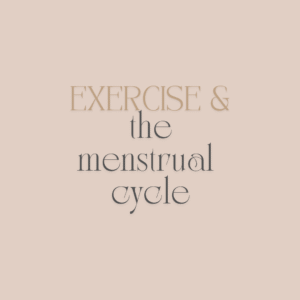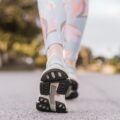
Exercise and the Menstrual Cycle
Exercise smarter, not harder. The menstrual cycle presents an eb and flow of hormones. These fluctuations in hormones really affects the way that we feel and our motivation. If we take a deeper look at the hormonal changes that occur during menstruation, we can find out how to best exercise according to where we are in our menstrual cycle.
How to Sync Your Workouts with Your Menstrual Cycle
Have you ever pushed through a workout and wondered why your body felt flat, tired, or unmotivated, even though you did the same routine last week and crushed it? It’s not all in your head, it’s in your hormones.
Your menstrual cycle influences energy levels, muscle recovery, mood, and performance. Syncing your workouts to your cycle can help you move in a way that supports your body, instead of working against it. Here’s how.
Understanding the Four Phases of the Menstrual Cycle
Your cycle isn’t just your period, it’s a full month-long rhythm made up of four distinct hormonal phases:
Menstrual Phase (Days 1–5)
Hormones: Oestrogen & progesterone are at their lowest.
Energy: Low, introspective.
Best movement: Restorative – think walking, gentle stretching, yin yoga.
Tip: It’s okay to rest more or modify your workouts. This is your body’s time to reset and shed.
Follicular Phase (Days 6–13)
Hormones: Oestrogen rises, progesterone remains low.
Energy: Boosted, clear-headed, motivated.
Best movement: Strength training, cardio, new challenges.
Tip: This is a great time to lift heavier, increase intensity, or try a new fitness class.
Ovulation (Day 14–16)
Hormones: Oestrogen peaks, luteinising hormone surges.
Energy: Peak strength, stamina, and sociability.
Best movement: High-intensity interval training (HIIT), power workouts, group fitness.
Tip: Take advantage of this window for performance and personal bests — just be mindful of form, as ligament laxity increases.
Luteal Phase (Days 17–28)
Hormones: Progesterone rises, oestrogen gradually drops.
Energy: Slowing down, mood may dip, more sensitive to stress.
Best movement: Low-impact strength, pilates, barre, steady-state cardio.
Tip: Shift toward consistency and recovery. Support your body with protein-rich meals and good sleep.
Why Cycle Syncing Matters
Cycle syncing isn’t about being rigid or needing to plan your month down to the day. It’s about tuning in to how your body feels and using hormonal shifts to your advantage. When you align your workouts with your body’s natural rhythms:
- You avoid burnout and overtraining
- You reduce PMS, fatigue, and inflammation
- You improve performance and recovery
- You feel more in sync with your body
What If You’re on the Pill or Have Irregular Cycles?
If you’re using hormonal contraception or have irregular cycles (such as PCOS, postpartum, or perimenopause), you can still apply the principles of cycle-aware training. Use your energy and mood as your guide instead of fixed dates. Tracking how you feel day-to-day can help you develop your own rhythm.
Listening to your cycle is a form of self-respect, not weakness. Movement should support your body, not punish it. As practitioners, we often remind patients: you don’t have to do the most — just do what’s right for you today.
Want help tuning into your body’s natural rhythm or working through cycle-related symptoms? Click here for an appointment!
– Adriana





